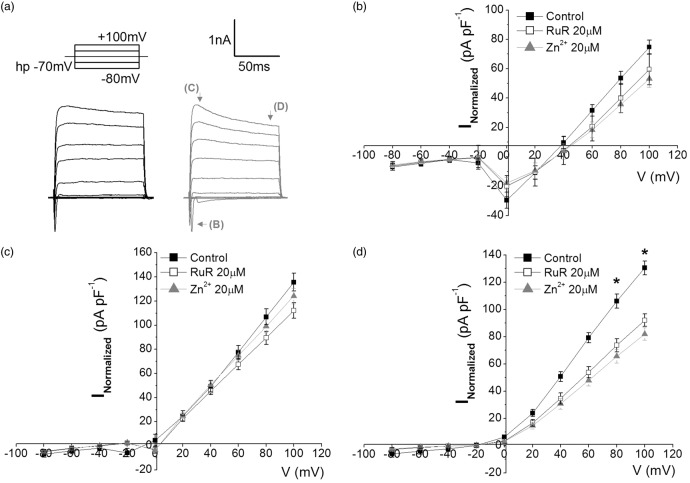Figure 1.
Blockade of CALHM1 reduces ionic currents, at positive potentials. (a) Representative traces of currents induced by a voltage pulse protocol (above) ranging from −80 to + 100 mV in the absence (black) and presence (gray) of CALHM1 blocker, Ruthenium Red 20 µM (RuR). (b–d) shows the relationship of the current density versus voltage (IV) to neurons in the absence (control) and in presence of two blockers of CALHM1 channel, RuR and Zn2+. In (b–d), the IV curves shows Na+-currents (corresponding to inward current depicted with arrow i in a), K+-currents (corresponding to outward current depicted with arrow ii in a) and currents in steady state (corresponding to outward current depicted with arrow iii in a). The graphs show the average ± SEM. *P < 0.05 (n = 6 for each case). One-way analysis of variance test with Fisher’s post hoc test were performed.

